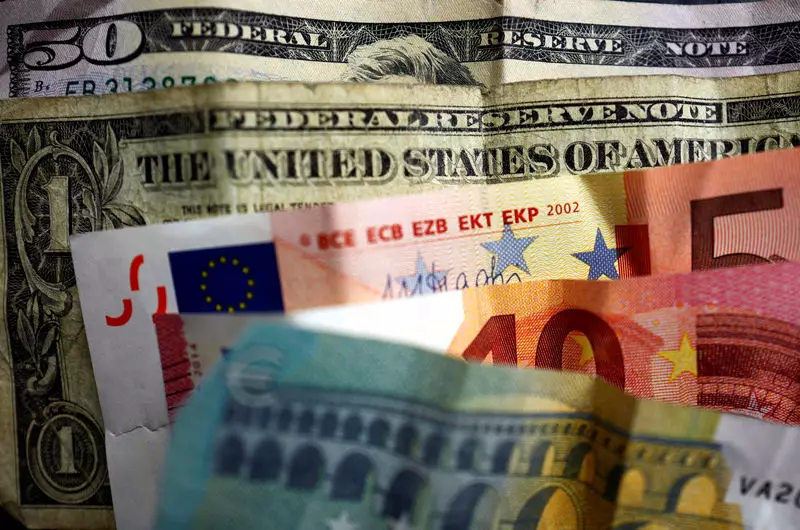The U.S. dollar saw a slight increase in value on Wednesday, while the euro experienced a decline following the release of disappointing eurozone activity data. This data suggested that there may be further rate cuts from the European Central Bank in the near future. The Dollar Index, which measures the greenback against a selection of other currencies, rose by 0.1% to 104.232 at 05:25 ET (09:25 GMT). This increase was seen as a continuation of an overnight rebound for the dollar, which has been influenced by the political climate in the United States.
Recent developments in the U.S. political landscape have impacted the strength of the dollar. The support Vice President Kamala Harris received from the Democratic Party, as well as the endorsement as the presidential nominee by President Joe Biden, has caused some fluctuations in the currency market. A Reuters/Ipsos poll even showed Harris slightly ahead of Republican nominee Donald Trump, though Trump is still considered the favorite to win the upcoming presidential election.
Analysts at ING noted that losses in the dollar from the softer June CPI report have been largely recovered in most USD crosses, with specific currencies like JPY, CHF, and GBP seeing gains. Looking ahead, the release of U.S. personal consumption expenditure inflation figures for June, as well as the Fed’s preferred gauge of inflation, could have a significant impact on foreign exchange sentiment.
The euro experienced a 0.2% drop against the dollar, falling to 1.0835, following the release of eurozone business activity data which indicated a stall in growth for July. The European Central Bank had held interest rates at 3.75% in the previous week, but with signs of slowing regional growth, further rate cuts are anticipated. Market expectations suggest there could be two ECB rate cuts by the end of the year.
GBP/USD traded slightly lower at 1.2898, retreating from the 1.30 level that was briefly reached the previous week. British business activity showed improvement for July, driven by strong manufacturing growth and an increase in new orders. The S&P Global Flash Composite Purchasing Managers’ Index rose to 52.7, indicating growth in the sector.
USD/CAD rose by 0.1% to 1.3796, nearing a three-month low for the Canadian dollar ahead of a Bank of Canada rate-setting meeting. Market speculation suggests an 84% chance of a 25 basis point rate cut, which would be the BoC’s second cut in consecutive months.
USD/JPY fell by 0.5% to 154.81, reaching its lowest level since early June. The yen has strengthened due to suspected currency market intervention by the government and positive purchasing managers index data. Attention is now on the Bank of Japan meeting next week, with speculation rising about a potential interest rate increase. Recent inflation and PMI readings have contributed to this speculation.
The currency market is highly sensitive to political, economic, and regional factors. The performance of major currencies like the U.S. dollar, euro, British pound, Canadian dollar, and Japanese yen can be influenced by a variety of events and data releases. Investors and traders must stay informed and attentive to these factors to make strategic decisions in the turbulent currency market.

